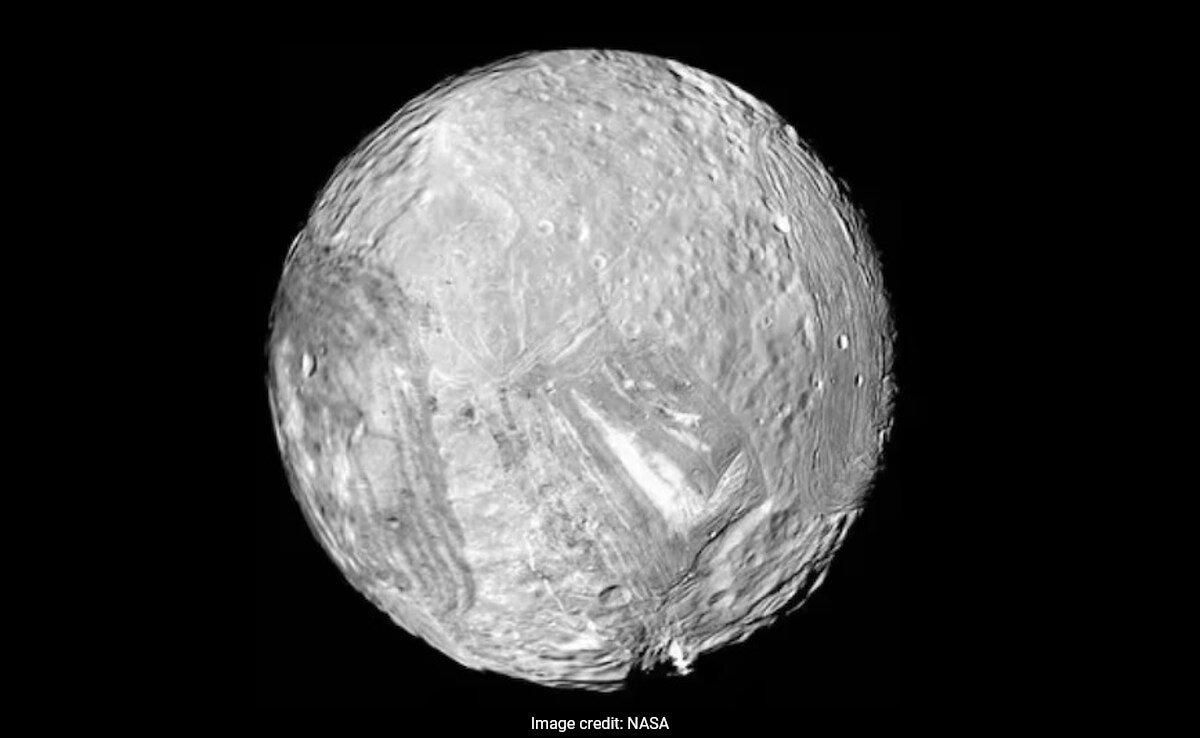The perennial quest for life beyond Earth has taken a fascinating turn as scientists set their sights on the moons of Uranus. While Uranus often remains in the shadow of its more famous neighbors in the hunt for extraterrestrial life, recent discoveries suggest that its moons might actually hold promise for harboring life.
Table of Contents
ToggleThe Moons of Uranus: A New Frontier in Astrobiology
Uranus boasts a collection of moons that include Ariel, Umbriel, Titania, Oberon, and Miranda—each of which has become a focal point of scientific exploration. Historically regarded as icy wastelands, these moons are now the subjects of newfound interest due to their potential for sustaining life.
Subsurface Liquid Oceans
A major breakthrough has been the identification of possible subsurface liquid oceans on these moons. This conclusion stems from a fresh analysis of data gathered by NASA’s Voyager 2 spacecraft, which visited the Uranian system back in 1986, and advanced computer modeling techniques. The potential existence of these oceans is pivotal as they might house the conditions necessary for life forms to thrive, akin to certain environments found on Earth and other heavenly bodies in the solar system.
Internal Thermal Conditions
For life to exist, having just liquid water isn’t enough—internal warmth is crucial. The surfaces of Uranus’ moons have extremely low temperatures, ranging from 60 Kelvin to 80 Kelvin (-213.15 degrees Celsius). Researchers are examining how these moons could maintain warmer internal environments, a necessity for metabolic activity and the maintenance of potential life.
Chemical Composition and Energy Sources
The moon’s ability to support life doesn’t only hinge on liquid water and warmth but also relies on its chemical makeup. Elements such as carbon, hydrogen, nitrogen, oxygen, phosphorus, and sulfur are essential. Due to the moons’ subsurface nature, traditional solar energy is absent, pushing the scientific community to explore possibilities of chemical energy sources. Here, chemosynthesis—used by organisms on the Earth’s ocean floor—emerges as a viable method of energy production.
Salinity and Toxic Elements
Another aspect under scrutiny is the ocean’s salinity. Excessive salinity could prove detrimental to life, prompting scientists to examine extremophiles—microbes that exist in harsh conditions on Earth— to better understand these limits. Furthermore, the prevalence of toxic substances like arsenic may pose significant threats to life, making chemical balance critical for potential habitability.
Miranda: A Surprising Candidate
Intriguingly, Miranda—one of Uranus’ smaller moons—has been recognized as a surprising candidate for harboring a subsurface ocean. This revelation defies prior assumptions that its diminutive size and age would preclude such possibilities. The finding mirrors Saturn’s moon Enceladus, which similarly possesses a global ocean amid earlier skepticism.
Future Missions and Research
With these discoveries, the astrobiology community is rallying for a mission dedicated to the Uranian system, aiming to delve deeper into the moons’ potential habitability. Such a mission could deliver definitive proof of the presence of subsurface oceans and evaluate their capacity to support extraterrestrial life. NASA envisions launching a new mission by 2049 to scrutinize the Uranian system intricately, ultimately illuminating the moons’ life-sustaining prospects.
The revelations surrounding Uranus’ moons have pioneered new avenues in the search for life. While mysteries abound, the notion of life in these distant locales is an enthralling thought that persists in captivating both scientists and the public. As more studies unfold and missions embark, we edge closer to uncovering the secrets of these icy worlds and unlocking the mysteries of potential extraterrestrial life.
For further insights and updates on space exploration, technology, and beyond, I invite you to explore more articles at Frozen Leaves News.
Source: Source






